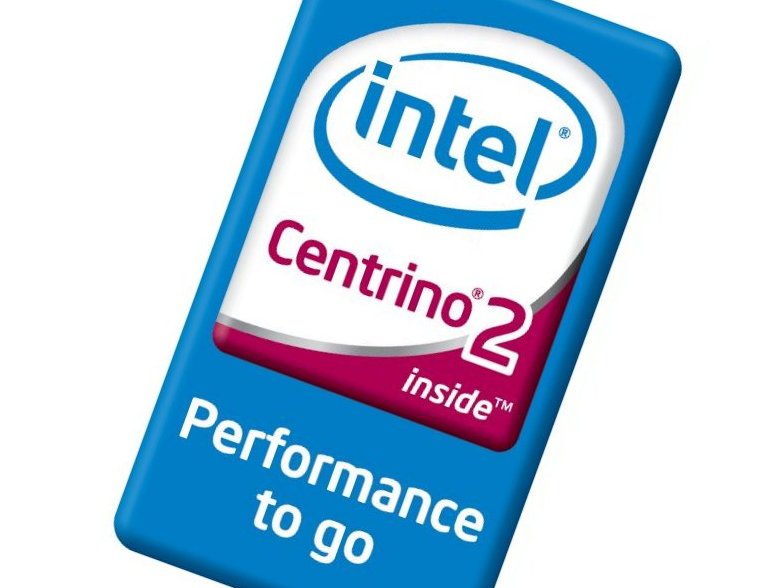What it does: Intel's Centrino 2 explained
What it does, how it does it, and why you should care

Another year, another revision of Intel's suffocatingly successful Centrino mobile PC platform. Except this time Intel think it's different enough to call it 'Centrino 2'. Thanks to faster processors, jazzed up wireless networking and hardware HD video support, Intel's newest mobile platform is apparently revolutionary enough to merit the new moniker.
At least, that's what Intel reckons. In reality, this is actually the fifth version of Centrino, which dates back to the original Carmel iteration of early 2003. So, is this latest effort, previously codenamed Montevina, really worthy of the second generation banner?
Falling power consumption
We're already extremely familiar with the benefits of Intel's latest 45nm Penryn processor core in the context of its desktop CPUs. In fact, such are the efficiency gains of 45nm, we're surprised it has taken Intel this long to roll out a full range of 45nm mobile chips.
Nevertheless, Centrino 2's new 45nm chips look like being a real boon for both battery life and performance. Power consumption at any given clockspeed falls by approximately 30 per cent compared with Intel's older 65nm processors.
That means you can either have the same performance and more battery life or more performance with same mains-free longevity. The fastest of the new Core 2 chips clocks in at 3.06GHz. And remember, the original Core 2 Extreme desktop processor ran at just 2.93GHz.
Add in a few architectural tweaks along with a boost in cache memory to fully 6MB and Intel's best mobile CPU now offers significantly more performance than its top desktop processor of just two years ago. Impressive. Later this year, Intel will raise the bar even further with the first quad-core mobile CPU.
Get daily insight, inspiration and deals in your inbox
Sign up for breaking news, reviews, opinion, top tech deals, and more.
Intel has also announced it will widen the range of small-form-factor Core 2 Duo mobile processors. These are the chips that allowed Apple to create the astonishingly thin MacBook Air. By the end of 2008, small-form-factor CPUs ranging from 1.2GHz up to 2.4GHz will be available.
How it works
In performance and efficiency terms, the new Mobile 45 Express chipset's key features are improved memory support and bus speeds. DDR3 memory brings lower operating voltages and hence improved battery life. A bus speed boost to 1,066MHz will help keep those hungry processor cores fed with data.
The other big change with the Centrino 2 chipset is a heavily revised integrated graphics core. Intel says the new GM45 core is around 70% quicker than the X3100 graphics processor used in the outgoing Santa Rosa revision of Centrino.
Sounds impressive, doesn't it? However, the X3100 core was so slow that even a 70% boost is unlikely to deliver decent gaming performance.
More significant, therefore, are two further features that come with the GM45 upgrade. The first is support for "switchable" graphics. The idea here is to specify a notebook with both the GM45 core and a more powerful discrete graphics chip.
Users can then hop between the two according to demand – integrated graphics for lightweight work on battery power, for instance, and the discrete GPU for gaming on the mains. That's not a new concept. However, Intel's twist is the ability to execute the switch between the two graphics cores without the need to reboot. Both AMD and NVIDIA's discrete GPUs are supposedly compatible with this feature.
Disc playback power savings
But arguably the GM45's killer feature is a new hardware video decode core. That's because high definition video streams as used by Blu-ray disks are extremely computationally intensive. Although a quick Core 2 CPU has the raw oomph to smoothly decode Blu-ray movies, the implications for battery life are pretty disastrous.
With hardware decode support, Intel reckons a full two hour HD movie can be played on a single charge.
Technology and cars. Increasingly the twain shall meet. Which is handy, because Jeremy (Twitter) is addicted to both. Long-time tech journalist, former editor of iCar magazine and incumbent car guru for T3 magazine, Jeremy reckons in-car technology is about to go thermonuclear. No, not exploding cars. That would be silly. And dangerous. But rather an explosive period of unprecedented innovation. Enjoy the ride.